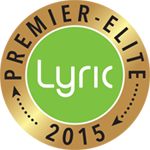
It just feels good to save money, right? It can be invigorating when you’ve found a good deal on something, and the larger discount, the more pleased you are. It’s a little too easy, then, to make the price your primary consideration, to always go for the least expensive option, to let your coupons make your consumer choices for you. When it comes to buying a pair of hearing aids, chasing a bargain can be a big mistake.
Health consequences can result from going for the cheapest option if you need hearing aids to manage hearing loss. Avoiding the development of health issues like depression, dementia, and the risk of a fall is the whole point of using hearing aids after all. The trick is to find the hearing aid that best fits your lifestyle, your hearing needs, and your budget.
Choosing affordable hearing aids – some tips
Affordable is not the same thing as cheap. Look for affordability as well as functionality. This will help you keep within your budget while allowing you to find the ideal hearing aids for your personal needs and budget. These tips will help.
Tip #1: Research before you buy: Affordable hearing aids are available
Hearing aids have a reputation for taking a toll on your wallet, a reputation, however, is not necessarily represented by reality. The majority of manufacturers produce hearing aids in a wide range of price points and work with financing companies to make their devices more affordable. If you’ve already decided that the most reliable hearing aids are too expensive, you’re probably more likely to search the bargain bin than look for affordable and effective options, and that can have a lasting, detrimental impact on your hearing and overall health.
Tip #2: Find out what your insurance will cover
Insurance may cover some or all of the expenses associated with getting a hearing aid. In fact, some states require that insurance cover them for both children and adults. It never hurts to ask. There are government programs that frequently provide hearing aids for veterans.
Tip #3: Your hearing loss is unique – choose hearing aids that can tune to your hearing needs
In some aspects, your hearing aids are a lot like prescription glasses. Depending on your sense of fashion, the frame comes in a few options, but the exact prescription differs considerably from person to person. Hearing aids, too, have specific settings, which we can calibrate for you, tailored to your exact needs.
Buying a cheap hearing device from the clearance shelf won’t give you the same benefits (or any useful results at all in many cases). These amplification devices boost all frequencies rather than raising only the frequencies you’re having a hard time hearing. What’s the significance of this? Normally, hearing loss will only affect some frequencies while you can hear others perfectly. If you boost all frequencies, the ones you have no trouble hearing will be too loud. You will probably end up not using this cheap amplification device because it doesn’t solve your real issue.
Tip #4: Not all hearing aids do the same things
It can be tempting to believe that all of the modern technology in a quality hearing aid is simply “bells and whistles”. But you will need some of that technology to hear sounds clearly. Hearing aids have specialized technologies calibrated specifically for people with hearing loss. Many modern designs have artificial intelligence that helps filter out background noise or connect with each other to help you hear better. Also, selecting a model that fits your lifestyle will be simpler if you take into account where (and why) you’ll be using your hearing aids.
It’s crucial, in order to compensate for your hearing loss in an efficient way, that you have some of this technology. A little speaker that turns the volume up on everything is far from the sophistication of a modern hearing aid. And that brings up our last tip.
Tip #5: An amplification device isn’t the same thing as a hearing aid
Alright, say this with me: A hearing aid is not the same thing as an amplification device. This is the most important takeaway from this article. Because the makers of amplification devices have a monetary interest in persuading the consumer that their devices do what hearing aids do. But that’s untruthful marketing.
Let’s break it down. A hearing amplification device:
- Takes all sounds and turns up their volume.
- Gives the user the ability to control the basic volume but that’s about it.
- Is typically built cheaply.
Conversely, a hearing aid:
- Is calibrated to amplify only the frequencies you have difficulty hearing.
- Can achieve maximum comfort by being molded to your ear.
- Has highly qualified professionals that adjust your hearing aids to your hearing loss symptoms.
- Has long-lasting batteries.
- Can limit background noise.
- Will help safeguard your hearing health.
- Can be programed to recognize specific sound profiles, like the human voice, and amplify them.
- Has the ability to adjust settings when you change locations.
Your hearing deserves better than cheap
No matter what your budget is, that budget will restrict your options depending on your overall price range.
That’s why we tend to emphasize the affordable part of this. The long-term benefits of hearing aids and hearing loss treatment are well recognized. This is why an affordable solution is where your attention should be. Don’t forget, cheap is less than your hearing deserves.”







